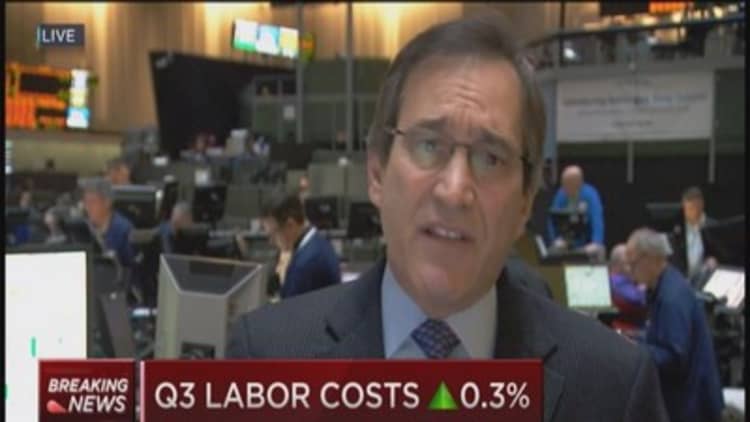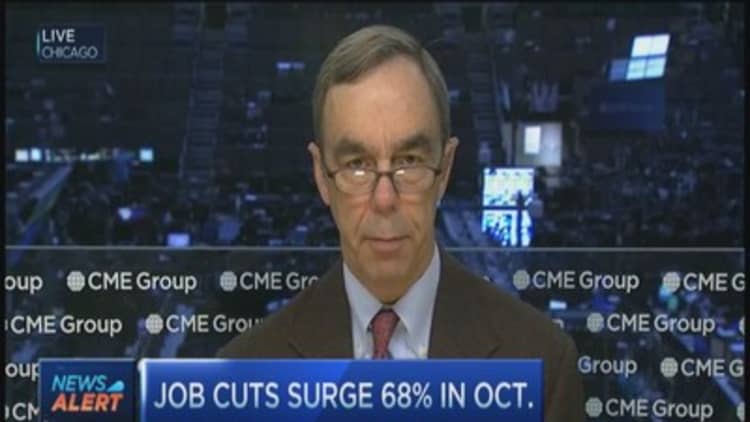The number of Americans filing new claims for unemployment benefits fell more than expected last week, while a reading on U.S. productivity came in better than expected..
Initial claims for state unemployment benefits dropped 10,000 to a seasonally adjusted 278,000 for the week ended Nov. 1, the Labor Department said on Thursday.
Read MoreWherethe world's future leaders are born and bred
The four-week moving average of claims, considered a better measure of labor market trends as it irons out week-to-week volatility, fell 2,250 to 279,000, the lowest reading since April 2000.
Economists polled by Reuters had forecast claims dipping to 285,000 last week. Claims have now been below the 300,000 threshold for eight straight weeks, suggesting that employment growth was gaining momentum.
A report on Wednesday showed private payrolls increased 230,000 in October, for a record seven straight months of job gains exceeding 200,000.
The government is expected to report on Friday that nonfarm payrolls advanced 231,000 last month after rising 248,000 in September, according to a Reuters survey of economists. The jobless rate is seen steady at a six-year low of 5.9 percent.
A Labor Department analyst said there were no special factors influencing last week's claims data.

The Federal Reserve last month gave an upbeat view of the labor market, dropping its characterization of labor market slack as "significant" and replacing it with "gradually diminishing."
Read MorePlannedlayoffs surge 70 percent in October
The claims report showed the number of people still receiving benefits after an initial week of aid declined 39,000 to 2.35 million in the week ended Oct. 25, the lowest level since December 2000. The unemployment rate for people receiving jobless benefits was at 1.8 percent for an eighth straight week.
US 3Q productivity beats forecasts
Productivity at U.S. nonfarm businesses increased more than expected in the third quarter, keeping a lid on wageinflation.
The Labor Department said on Thursday productivity grew at a 2.0 percent annual rate after expanding at an upwardly revised 2.9 percent pace in the second quarter.
Economists polled by Reuters had forecast productivity, which measures hourly output per worker, advancing at a 1.5 percent rate after the second quarter's previously reported 2.3 percent expansion pace.
But the trend in productivity remains sluggish. It rose at only a 0.9 percent pace compared to the third quarter of 2013. Over the past three years, it has never topped 1 percent on an annual basis.
Read MoreUS service sector growth drops again in October
Unit labor costs, the price of labor for any given unit of production, rose at a 0.3 percent rate in the third quarter, after declining at a 0.5 percent pace.
But pay is accelerating, a good sign for the economy. Compensation per hour increased at a 2.3 percent rate in the third quarter after a similar rise in the prior quarter.
Hourly compensation was up 3.3 percent from a year earlier, the fastest increase since the fourth quarter of 2012.

The Federal Reserve is watching wage growth as it ponders when to raise benchmark interest rates, which it has kept near zero since December 2008. The U.S. central bank ended its bond buying program last month.
The increase in compensation adds to other signs of a pickup in wages. A broad wage measure, the employment cost index, recorded its biggest gain since 2008 in the third quarter.
—CNBC contributed to this report.

